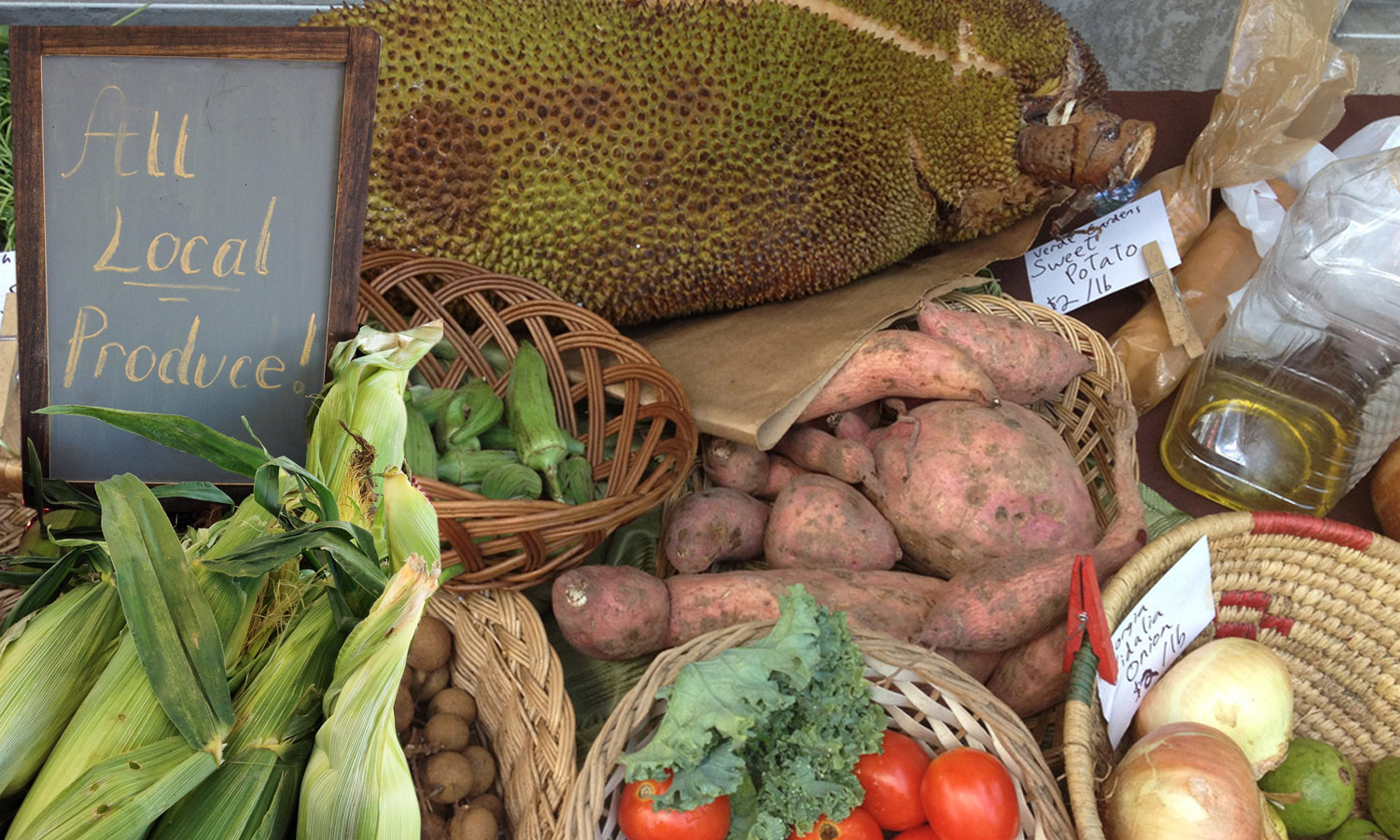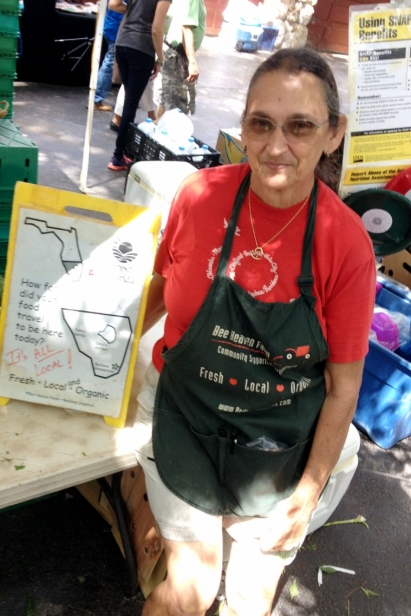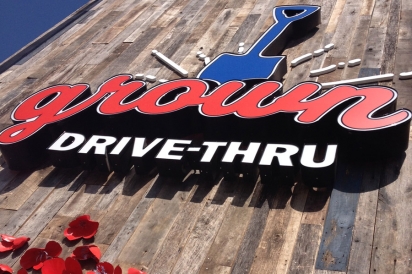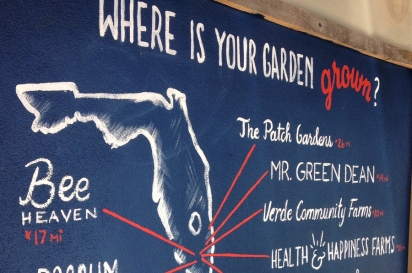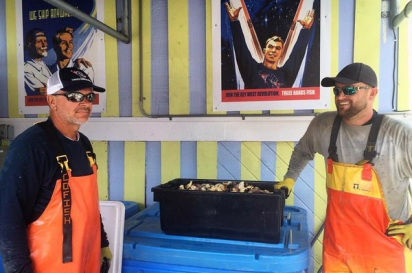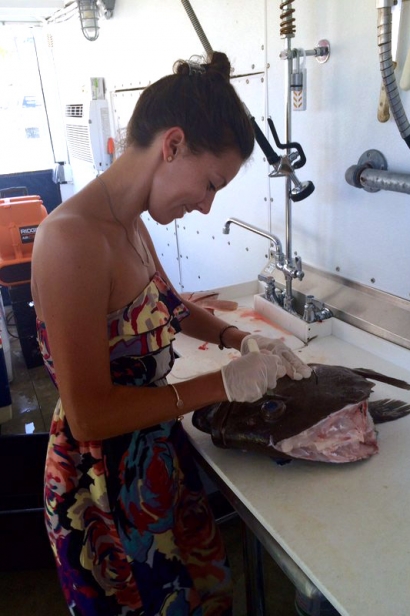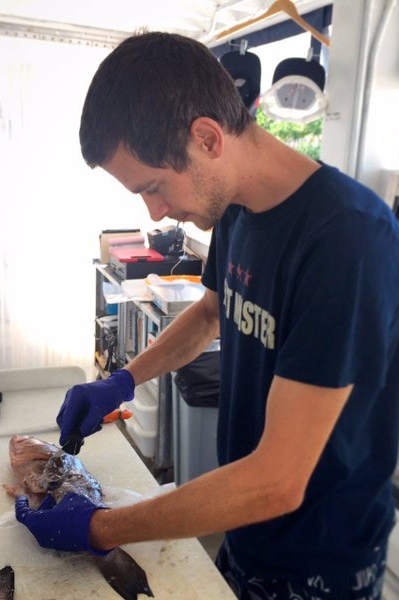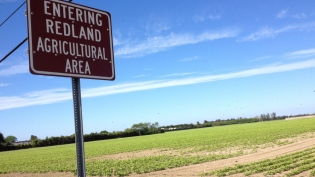Part 1: Telling the Truth about Farm-to-Table in South Florida
Last week, Tampa Bay Times food critic Laura Reiley left readers with a bad taste in their mouths after reading her series, Farm to Fable. Her comprehensive investigation revealed farm-to-table restaurants boasting about using area farms that weren't even in business. Florida wild-caught shrimp on the menu turned out to be farm-raised from India. Reiley outed fine-dining restaurants for misrepresenting the provenance of pork, poultry and produce. She confronted chefs and named names.
And farmers markets in Tampa Bay were guilty too – of not having actual farmers. Many were instead relying on resellers peddling produce from elsewhere in the United States and Central and South America, as well as rejects from Lakeland-based Publix.
Some of these dirty secrets – the Sysco truck pulling up to deliver produce to the restaurant proudly listing local farms on its chalkboard, or the “local” farmers market produce that actually grew in Central America – are hardly secrets at all in South Florida and elsewhere. As Reiley says in her story: “Just about everyone tells tales. Sometimes they are whoppers, sometimes they are fibs borne of negligence or ignorance, and sometimes they are nearly harmless omissions or ‘greenwashing.’”
We talked to South Florida chefs, restaurateurs, farmers, market managers and others in the food supply chain to get their reaction to Reiley’s story and share their thoughts on what’s going on here. Our mission isn’t to call out chefs who are lying about what they’re serving, or police the farmers markets. Instead, we want to keep the conversation going.
The most effective person to police these issues may well be the informed consumer, who – armed with the knowledge of what grows here and when it’s in season – can decide who to buy from, where to eat and what to believe.
The Restaurants
Lesson No. 1 for chefs and restaurateurs: Check your menus and chalkboards. Make sure your farmers and suppliers are accurate and up to date. Don’t be like the restaurants called out for sourcing from farms they weren't buying from, as described in Reiley’s article.
“This puts people on notice,” says Michael Schwartz of Michael’s Genuine Food and Drink, one of the pioneers in farm-to-table dining in South Florida. “This has been going on for a long time. It’s about time someone wrote about this.” Schwartz says he and his staff talked about the story and posted it. Even though he’s been making local foods part of his menus since he started 10 years ago, new people are constantly coming on board, and his Genuine Hospitality Group has expanded to include other restaurants, including Harry’s Pizzeria and Cypress Tavern. “It’s a good wakeup call for us and a good opportunity to talk.”
Norman Van Aken, acclaimed Florida chef, restaurateur, author and founding father of New World Cuisine, wasted no time in sharing Reiley’s story with his team at Norman’s at The Ritz-Carlton Orlando, Grande Lakes. “I taped it up and read it aloud to the staff,” he says. “What a much-needed piece!” he says. “She is a valued journalist who cares deeply.”
And there’s no question in Van Aken’s mind about what he calls crass commercialty of the farm-to-table trend. “There’s so much hype, a penchant for misrepresentation.” One solution he suggests for identifying culprits: “Ask the farms to list who they sell to. Let’s find out who’s buying from you.”
The Farmers
Local farmers are certainly aware of the problem. “Deception is rampant,” says Margie Pikarsky of Bee Heaven Farm. “If someone did a similar exposé here, it’d be as bad, or worse at restaurants, and at markets. Many chefs have good intentions, and may visit farms, then perhaps order once, or swing by the market to buy something. But lacking the distribution channel, they’re not motivated enough to make it happen. And they fall prey to the need to buy cheaply. Other institutions, like hospitals, claim green initiatives and local sourcing, but again, may only buy a few times to impress board members or doctors.”
The restaurant practice of listing farms they don’t buy from is especially aggravating to Urban Oasis Project’s Art Friedrich, who has worked with Verde Community Farm to distribute their organic produce. “Why is my trademark on your board generating profits for you?”
But local farmers often have their hands full planting, harvesting and packing their produce. “We don’t have time to police menus,” says Gabriele Marewski of Paradise Farms, who sells edible flowers, microgreens, tropical fruits and other produce to high-end restaurants.
Adds farmer Chuck Lyons of Verde Community Farm: “I don't pay too much attention to what restaurants are doing. Too busy. I know this type of stuff goes on all over. I think a lot of times a restaurant starts out thinking they can afford and figure out the logistics of sourcing locally, but find that it affects their bottom line.”
And the matter of efficient distribution channels – getting produce from the farms to the chefs – remains an ongoing challenge in South Florida. Chefs are busy. They rarely have the luxury of visiting farms and picking out what looks enticing for the day’s special. Instead, they order from lists of produce. For small restaurants, delivery charges can prove prohibitive. Another option that has emerged in recent years is the commercial forager who scours farms for fresh produce and delivers them to chefs, like Farm to Kitchen Miami’s Chris Padin and Ali Lauria. But they have moved on, passing their business along to Orlando-based Local Roots, mentioned in Reiley’s story.
Another forager and distributor, Debra Iglesias, started her business, The Garden Network, in order to bring organic produce to restaurants. In addition to finding out the availability of produce from farms, sending the list to customers, consolidating shipments and arranging pickups, she sees herself as a personal concierge. “I want to highlight the growers. I’ve taken time to develop relationships.” She even helps harvest, working with farms including Paradise Farms, Mr. Green Dean, Possum Trot, Verde Community Farm, Bee Heaven, Dania Beach PATCH, Treehuggers, Health and Happiness, and backyard growers who might have a surplus of fruits like mangos on their hands.
Right now, she is working with a slate of respected restaurants, including 3030 Ocean, the Ritz-Carlton, Fort Lauderdale, Market 17 and Lilikoi Organic Living at South Beach. Iglesias is also the forager for a new high-profile Miami restaurant: Grown, which, according to a press release, “marries farm-to-fork cuisine with the convenience of fast food dining.” Grown’s owners and creators, former HEAT star Ray Allen and his wife Shannon, creator of The PreGame Meal TV show, came up with the idea of organic fast food out of frustration with choices for their family and five children: “I had an a-ha moment where I realized I couldn’t site around helpless waiting for someone else to create a fast-food option that met our family’s dietary needs.”
Grown: A Case Study in the Works
Still in its soft-open stage, Grown has a menu filled with all the right buzzwords: organic, local, vegan, gluten-free, paleo, family friendly. The restaurant, in a shopping center on busy South Dixie and Ludlam, sports the symbols of the farm-to-table movement: colorful displays of fruits, a rustic facade made from old barn wood, a rooftop garden – and the requisite blackboard listing local farms along with a map showing their location.
Will they be able to stick to their mission? Iglesias says yes.
“I’m their accountability person,” she says. They’ve already bought rosemary, sage and cucumbers from Verde, parsley from PATCH, dill from Green Dean, tomatoes from Health and Happiness and arugula and kale from Paradise Farms, where Gabriele Marewski is helping with their organic certification.
Grown’s Shannon Allen and executive chef Todd Kiley say other suppliers bring in food from Miami and far afield. “We get our shrimp and organic salmon from the Miami-based seafood distributor Tuna Del Mar. The salmon is free of hormones and comes from the Faroe Islands and Scotland. Our shrimp is sourced from Mexico and Ecuador.” Their non-local organic produce comes from the following purveyors: UNFI, Albert's Organics, Freedom Fresh, FreshPoint, Cheney Brothers, Acco – names that raise eyebrows among some local farmers.
But even with a slate of organic suppliers local and otherwise, Shannon Allen says Grown is working to meet their restaurant needs. “An additional challenge we face on a daily basis is that organic produce is not as readily available as conventionally raised products, which creates ordering and scheduling challenges for our chef,” she says. “For example, we need to order our grass-fed brisket, free-range chicken, dairy, and cage-free eggs two weeks in advance. Because of this, we occasionally run out of certain ingredients. To accommodate this challenge, we are constantly changing up our Market Vegetable Special on the menu.” Allen says those food prices add up: "On average our cost of food is three times more expensive than what other restaurants pay for their ingredients."
Time will tell if this ambitious new concept of selling organic fast food at affordable prices and using local suppliers works out. But Grown's principals have been transparent about their sourcing, providing supplier names quickly when we asked for them. And Iglesias is optimistic. “They want to educate children, support local programs, provide healthy fast food,” she says. “I feel confident that they’ll follow through with their vision. They’ve gained my trust.”
Suspicious Seafood
In a state with 1,197 miles of coastline and 11,000 miles of coastline, local seafood on the menu ought to be easy to find, right?
Think again. According to the Tampa Bay Times story, some of that “local” seafood came from the other side of the globe – and it sure didn’t swim here, like the farm-raised shrimp from India described as wild-caught Florida shrimp. Or the Florida blue crab that was actually a species called “swimming blue crab” that comes from the Indo-Pacific region, revealed by DNA testing.
In South Florida, markets like Garcia’s and Casablanca use their own fleet of commercial fishing boats to bring in seafood to sell and serve in their restaurants, so diners can see whole fish. Stone crabs in season – harvested in waters off both coasts from mid-October through mid-May – are a pretty safe bet as a local choice. But can diners really tell grouper from tilapia, the actual fish in the grouper sushi roll tested in the Times article?
Many can’t. So it’s easy for restaurants to get away with misrepresenting seafood.
“Unfortunately, nothing in the article surprised me,” says Paul Menta, co-founder of Three Hands Fish and executive chef of the Stoned Crab restaurant in Key West. As a commercial fisherman, a seafood supplier with their market and a seafood buyer for the restaurant, he’s keenly aware of how widespread seafood mislabeling and misrepresentation is. “In fact, it’s what drove me, and my two co-founders, to launch Three Hands Fish. We saw restaurants and markets across the country deceiving, either actively or passively, their customers and we wanted to do something to change the tide.”
Falsifying the source of seafood is a big problem in South Florida and throughout the U.S., says Menta. “I know the industry so well that I get slapped in the face by mislabeling and misrepresentation quite regularly – no matter where I am in the country. A restaurant asserts that the fish they serve is fresh, locally caught grouper, when in fact we’re months away from grouper season. Really? Well, if that’s the case, I either have to start working with their suppliers, or they’re buying their seafood illegally.”
When menus promote “just-caught” or “fresh” fish in the middle of a weeklong storm, that’s misleading, he says. “Nobody’s fishing in high winds and rain and, as a result, restaurants simply cannot be serving just-caught fish. It either boils down to blatant deception on the restaurant’s part or the market that supplies the restaurant, or laziness. Either way, the customer is getting the short end of the stick.”
The rules for shrimp are different from other types of seafood, like hogfish, grouper or mahi-mahi, Menta explains. “All shrimp is going to be frozen because it needs to be. Shrimpers are on the water for 20-30 days at a time. The shrimp they catch on day one needs to be frozen immediately so that by day 30, it hasn’t gone bad.” While shrimp used to be kept on ice and added chemicals, today’s process does not rely on chemicals. “The best shrimp is only frozen once. It’s hauled to the deck, immediately put in saltwater brine, chilled down, and then finally frozen,” he says.
To be accurate, restaurants and markets should promote shrimp as “once-frozen” or “frozen fresh,” says Menta. “At Three Hands Fish, we promote our Key West Pinks as being “frozen, never thawed” because we understand that the degradation of quality begins when the shrimp is frozen multiple times.”
Is Your Seafood Fresh and Local?
When you sit down at a restaurant and see a “fresh, local” seafood dish promoted on the menu, Menta recommends asking these questions:
• Where is the fish from?
• When was it brought in?
• Do you have any whole fish that you can see?
• Can you leave a piece of the skin on the fillet so you can more easily verify the species?
“We also encourage our community members to always have an understanding of what species are currently in season so they can begin to snuff out the deception,” says Menta. Their Three Hands Fish “Fish School” in Key West hosts events to educate the Key West community on issues like mass seafood mislabeling and misrepresentation and what, specifically, they can do to avoid deception. Their commercial fishermen work in local waters; their fillet masters fillet the day’s catch; their community and restaurant members buy the fish. “We’ve taken the mystery and confusion surrounding the seafood industry and demystified it,” he says. “What our fishermen catch is what we have in stock. If the weather’s bad, and no one is fishing, we have nothing to sell.”
What Consumers Can Do?
As Reiley points out in her story, Florida’s Department of Business and Professional Regulation handles restaurant safety, sanitation and food misrepresentation issues, which included violations for misrepresenting fish and veal. Restaurants in the Tampa Bay area were not cited for using conventional produce instead of organic. Fresh from Florida, the state’s food marketing program, lets restaurants use their logo to show that Florida ingredients are on the menu. But it is not a regulatory agency, so there’s no assurance that the restaurant is telling the truth.
One group that honors restaurants for their use of local ingredients is the Slow Food movement and their Snail of Approval awards. Every year, Slow Food Miami lists restaurants, bars and food and beverage artisans that adhere to their standards for quality, authenticity and sustainability. The criteria is specific, says president Michele Benesch.
“Restaurants have to source from at least two (local) farmers, growers or foragers for at least two appetizers and two entrees. These items should be identified as local,” she says. Then, each nominee is required to list their choices. “We actually have a committee that calls and verifies that they truly do purchase from their source and that they are in good standing. Then, after they are awarded the Snail of Approval plaque, we vet them every two years or if there is a change in chefs.”
Snail of Approval listings are here. This year’s honorees are being honored at Slow Food Miami’s Freshest Night Out April 29 at Beachcraft at 1 Hotel South Beach. Tickets are available here.
Look for Part 2 later this week: South Florida Farmers Markets: So many markets, so few farmers


